
| National Institute for Nuclear Physics - ITALY |

|
| SAMADHA project | Who we are | Activities & Publications | Testa Grigia Station | Mount Chacaltaya Station | Photo Gallery | Real time data |
|
SAMADHA is a project of environmental dosimetry funded by the Italian National Institute for Nuclear Physics (INFN), dedicated to the monitoring of the dose due to cosmic rays in high altitude areas in South America, inside the region of the "South Atlantic Magnetic Anomaly". Cosmic rays are energetic particles - mostly protons - that come from space and constantly hit the Earth. When they enter the atmosphere they interact with nitrogen and oxygen nuclei, giving rise to cascades of secondary particles: electrons, muons, gamma rays, neutrons and mesons. The particles that reach the ground contribute to the total environmental dose from natural ionizing radiation to which human beings are exposed. The cosmic ray dose increases with the altitude above sea level due to the lower atmospheric absorption. Although the flux of neutrons at ground is lower than that of other secondary particles, their contribution to the dose is significant, due to the serious biological damage that they can cause to our cells. |
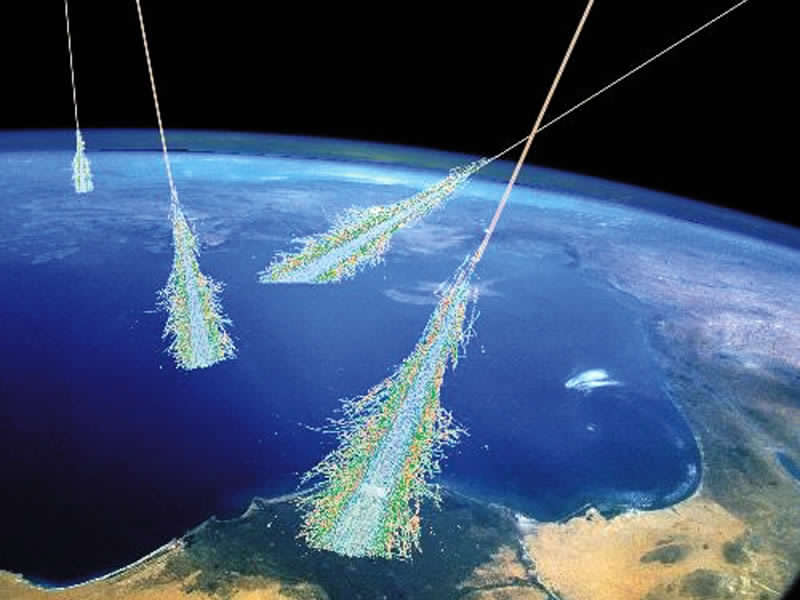 Credit: NASA |
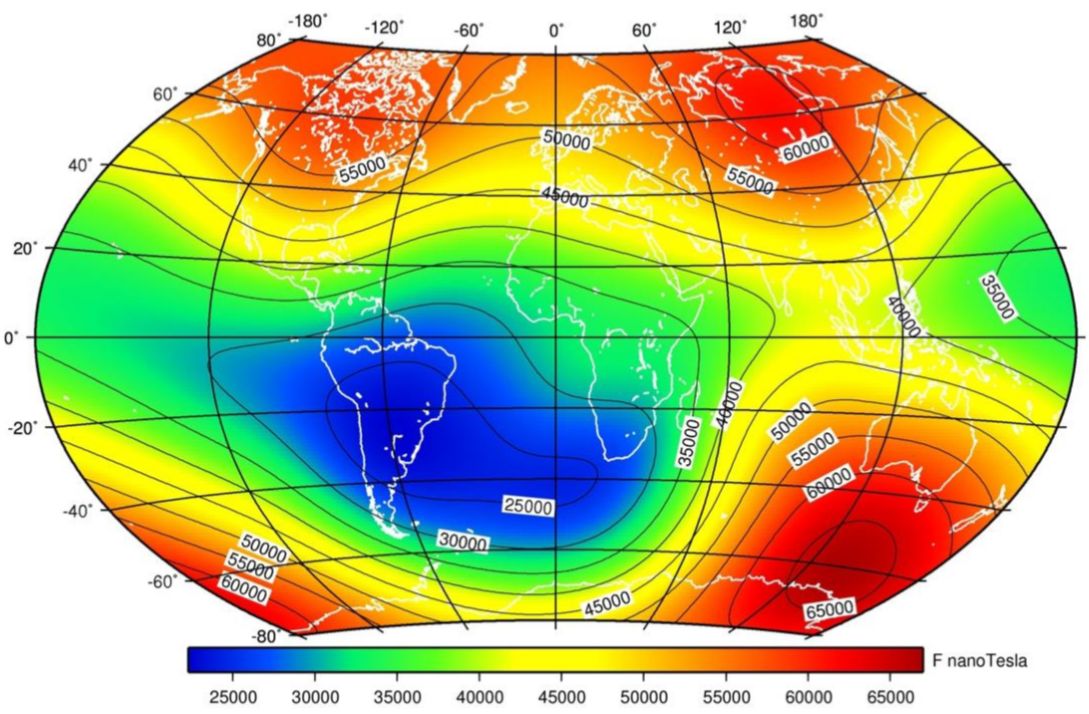 Credit: British Geological Survey (bgs.ac.uk) |
The South Atlantic Anomaly (SAA) is a large region
that extends over part of the Atlantic Ocean and South America, in which
the magnetic field has the lowest values of our planet.
This anomaly is due to the inclination of the geomagnetic field axis with respect to
the Earth rotation axis and to the displacement of the dipole center
with respect to the Earth's center.
The figure on the left shows a map of the geomagnetic field intensity on the Earth's surface. The field has minimum values (blue region) in South America and in the adjacent Atlantic Ocean. Due to this geomagnetic field asymmetry, the SAA is the region where the Van Allen Belts are closest to the Earth's surface. |
 Credit: NASA |
Van Allen Belts (Radiation Belts) are two toroidal shaped regions that envelop the Earth, within which there is a very high density of cosmic rays trapped by the geomagnetic field. In the inner belt, closest to the Earth's surface, the trapped particles are mostly protons, while in the outer belt there are mostly electrons. In the SAA region, the extreme points (called mirror points ) of the inner Van Allen Belt approach the Earth's surface up to a distance of about 200 km, generating a reservoir of energetic particles above the upper layers of the atmosphere. Solar activity, by perturbing the geomagnetic field, influences the extension and flux of particles in Van Allen Belts, favoring sudden releases of particles from the trapping regions. |
|
According to the data recorded by the Pamela satellite
(Adriani et al.2015), the energy spectrum of trapped protons
in the inner Van Allen Belt extends up to some GeV. In case of "precipitation" of protons due to magnetic perturbations caused by solar activity, the interactions of the most energetic protons with the nuclei of the atmosphere could produce secondary particles able to reach the ground, which would add up to the standard flux of cosmic rays. The observation of these phenomena, particularly in the form of neutron fluxes, would be favored at high altitudes due to lower atmospheric absorption. Indeed, the cosmic ray neutron flux increases by a factor 25-30 passing from sea level to 5000 meters. The figure on the right shows how the dose rate varies according to the altitude above sea level, for different types of secondary particles of cosmic rays, according to Monte Carlo simulations. The figure refers to a geographical location with magnetic rigidity similar to that of the center of the SAA. Neutrons give the largest contribution to the dose from mountain altitudes up to more than 30 km. |
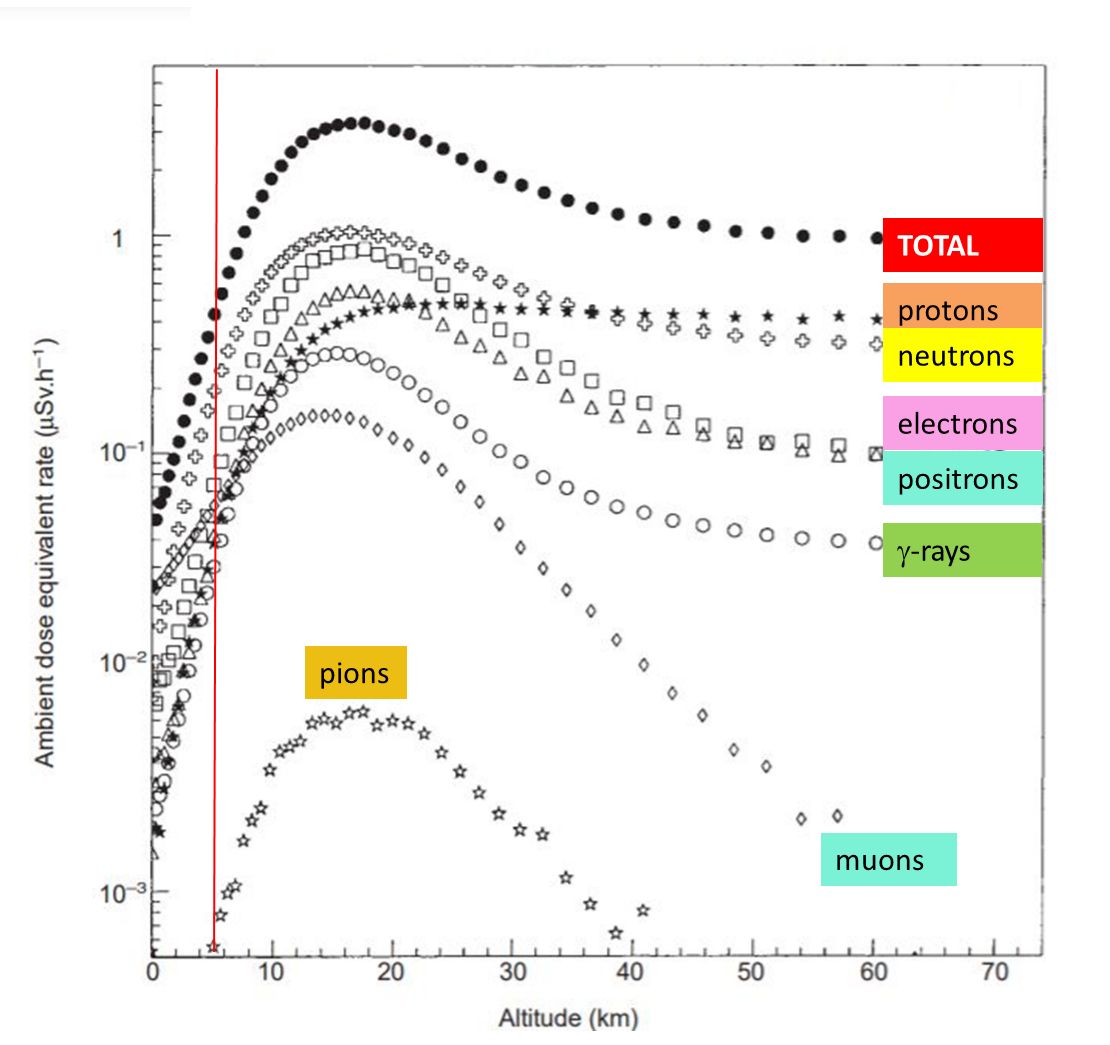 From Ferrari et al.(1999) |
|
The SAMADHA project is dedicated to dosimetric monitoring in the Andean areas within
the SAA region, to study possible dose variations due to the proximity
of the Van Allen Belts to the Earth's surface.
The interest of the project goes far beyond the pure scientific result, if we consider that in the Andean region live millions of people at extremely high altitudes. Think of the Bolivian plateau, located at over 4000 meters, with a million people in the city of El Alto, or urban agglomerations such as Rinconada in Peru, located beyond 5000 meters, where about 30,000 people live. The location chosen for the measurements in the SAA region is the high altitude laboratory of Chacaltaya in Bolivia (5240 m). The Chacaltaya dosimetric data are published here, updated every hour. At the Testa Grigia Laboratory of the National Council of Research (CNR) at Plateau Rosa (3480 m, near Cervinia) further dosimetric data are collected as a term of comparison outside the SAA. The data are published here, updated every hour. The SAMADHA measurements constitute the first high altitude monitoring in the region of the South Atlantic Anomaly, thus extending the dosimetric mapping of the Southern hemisphere started with the HALCORD and CORA projects (funded by INFN) in the Argentine base of Marambio in Antarctica, and which will continue in 2022-2023 with the CORDIAL project, funded by the National Project Research in Antarctica (PNRA) for measurements in the Italian-French base Concordia at Dome-C. |
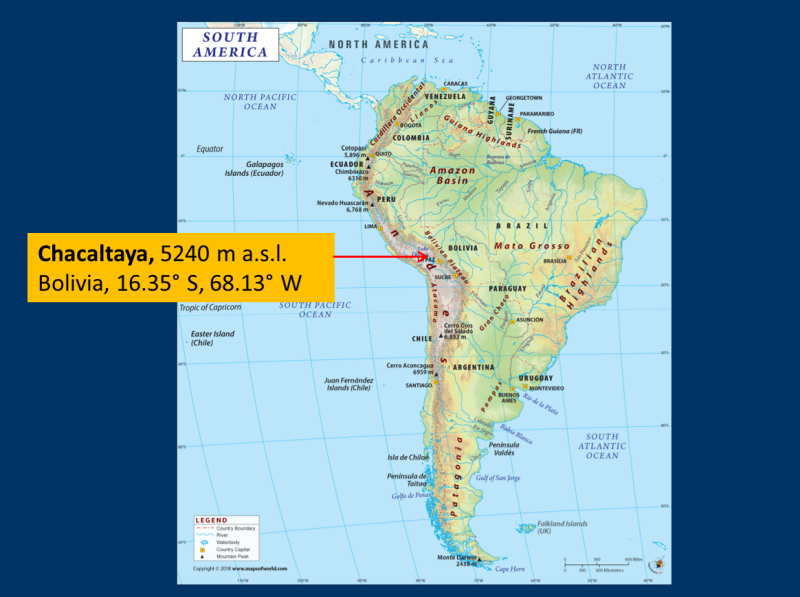
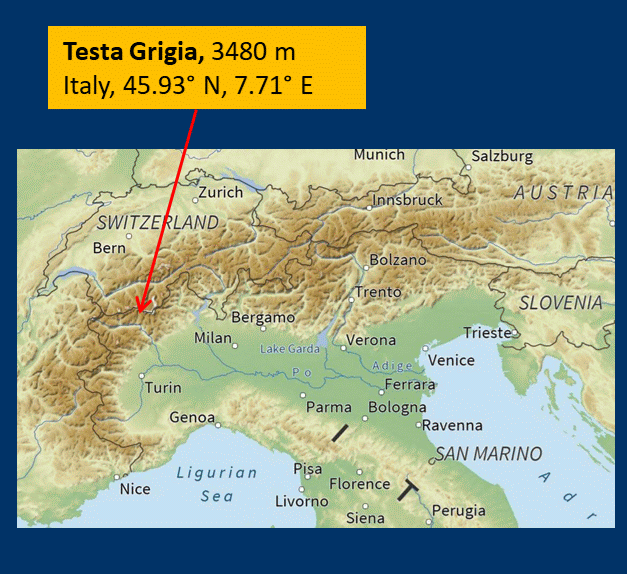 |
|
|